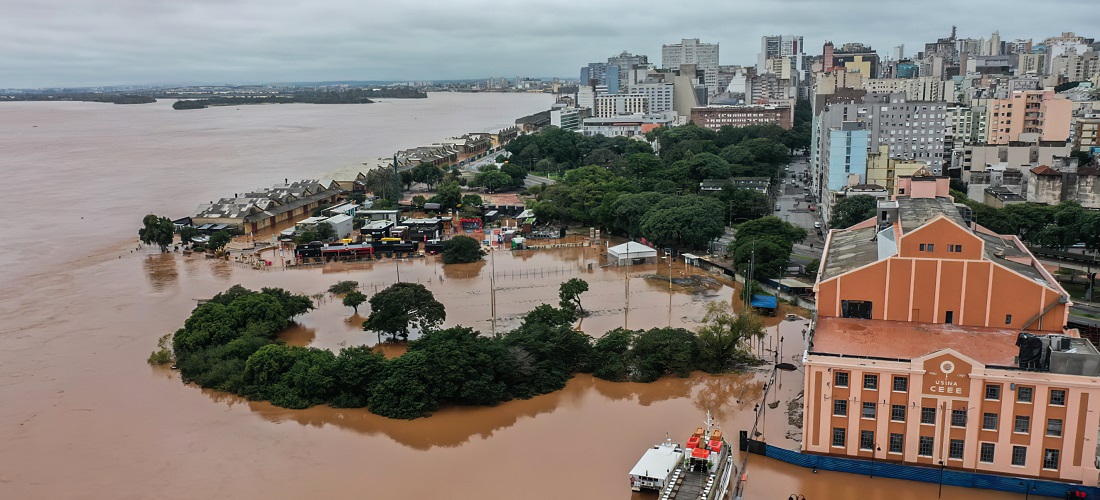
Deadly floods in Brazil hit exports hard
May, 10, 2024 Posted by Gabriel MalheirosWeek 202418
The already reduced soybean crop prospects in Brazil have run into even more issues due to heavy rains and deadly floods in Rio Grande do Sul, one of the largest producing states in the country.
Luxembourg-headquartered broker BRS revealed in its latest Weekly Dry Bulk Newsletter that the Brazilian national supply company Conab estimated that the weather would threaten 30% of unharvested soybeans or around 7m tonnes.
Before the heavy rains, Conab was expecting soybean production in Rio Grande Do Sul to reach 21.89m tonnes as the harvesting season started quite well for the state with the potential to become Brazil’s second-largest soybean producer.
BRS further stated that the extent of damages will be difficult to estimate as there was a significant share of beans still to be harvested in the central region – about 40% when combined with the southern region – and the northern part of the country with about 10%.
Conab expects to revise its national output forecast in mid-May with the initial forecast being around 146.5m tonnes for the 2023-24 season, some 5.2% lower than the previous year. This is already lower than the forecast made by the US Department of Agriculture which stood at 155m tonnes, an annual decline of 4.3% from the previous crop.
The USDA has been predicting Brazil’s soybean exports to reach 103m tonnes this season, 7.8% higher year-on-year. But with the recent floods in mind, market players could readjust their expectations for the remainder of the season.
Most are expecting Brazil’s soybean exports to spike in the second half of 2024 and generate further support for the panamax and kamsarmax vessels in the East Coast South American region.
“Despite the disruption in Brazil, the third quarter of the year is usually the peak exporting time of the year. Therefore, analysis suggests that the major support to the segment’s freight rates in the region will have to come from the tonnage side,” BRS said.
Rio Grande do Sul is also Brazil’s foremost producer of rice which increases the consequences of the recent severe rain and floods on agricultural commodities and shipping trade. Platts believes that exporters are optimistic about the remaining 10-15% of the rice crop yet to be harvested despite flood damage.
While some areas escaped flooding, the direct impact on others raises concerns about potential loss and compromised quality, leaving uncertainty about the extent of damage, especially as there were reports of damage to rice stored in silos.
Anec, an association representing global grain exporters, said earlier this week that access to the port of Rio Grande – which is operating normally after a complete halt – had been disrupted as a local rail line stopped working. Road blockades are forcing grain trucks to travel an extra 400 kilometres through alternative routes to reach the port which is further increasing freight costs.
Most recent reports state that the floods have killed at least 107 people with at least 136 people still missing and more than 165,000 have been displaced from flooded homes and rescued by boats and helicopters in around 350 municipalities.
-
Other Logistics
Oct, 16, 2021
0
Brazil’s Nortec to export raw materials to China and the US in 2022
-
Grains
Mar, 06, 2024
0
After boosting Brazilian GDP in 2023, agriculture should weigh down this year
-
Trade Regulations
Jan, 23, 2020
0
Brazilian minister promotes ethanol production partnership with India
-
Ports and Terminals
Mar, 09, 2022
0
Paraná ports have settled aa new double handling record

